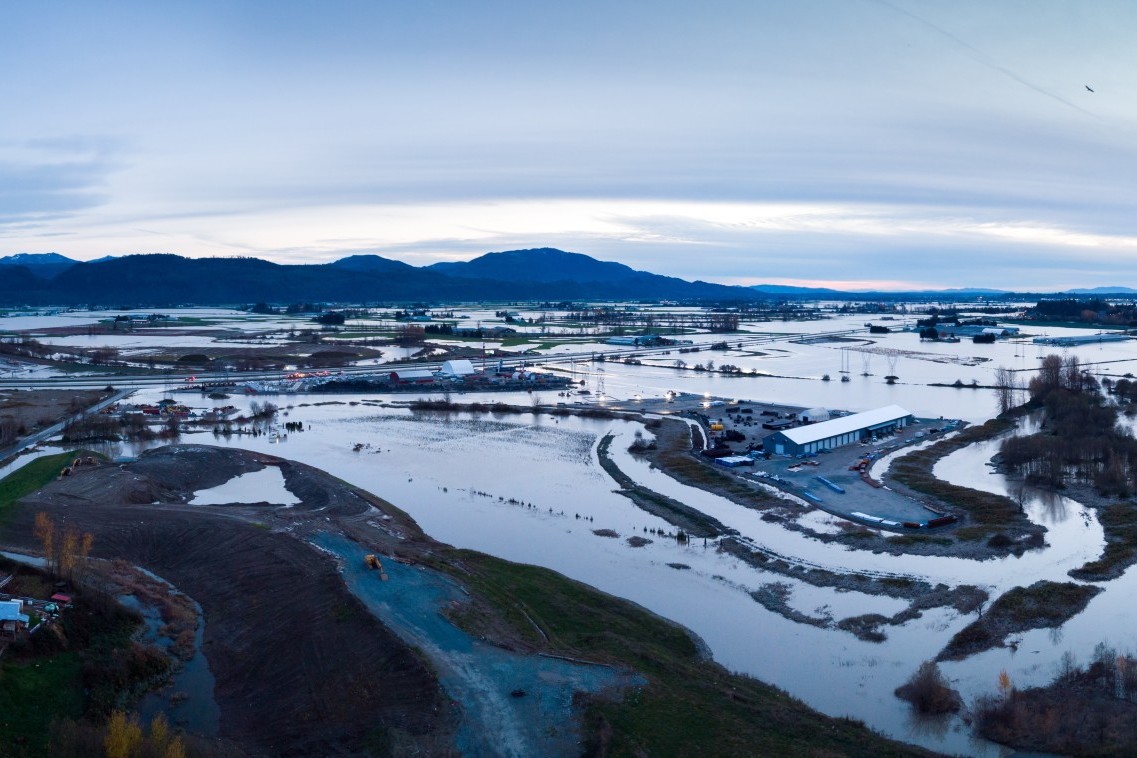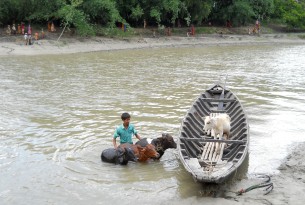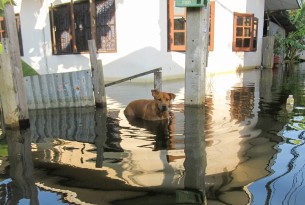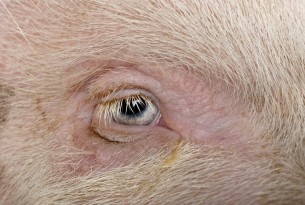
Missed opportunities to prevent disasters in Abbotsford, British Columbia
While the devastating flood in Abbotsford, British Columbia in 2021 was shocking to many Canadians, there has been a long history of disasters in the area and many missed opportunities for government officials and the agriculture industry to prevent similar catastrophes.
What is now the City of Abbotsford sits on the unceded traditional and ancestral territories of the Stó:lō Matsqui, Sumas First Nation and Kwantlen First Nations and the Nooksack peoples. These communities were the original caretakes of this land have lived there since time immemorial.
Alongside the increasing pressures of climate change, here are some of the ways government action and inaction have impacted the region:
The “Gold Rush” resulted in colonization of the Fraser Valley. This “rush” enabled an agricultural community in the valley to form, while forcing First Nations from their lands and into reserves.
Additional settler-colonists occupy the land through European-type cattle agriculture. The agricultural community realized the area was so fertile due to the annual overflow of the Sumas Lake.
Draining, Diking and Irrigation Act was introduced by the provincial government. Private enterprises and individuals led the diking of the region and draining of the lake.
The Fraser River rose 4 feet or 1.2 metres. According to provincial government records at the time, the waters were “higher than was ever known before.”
During the floods of 1876 a letter was published in the Mainland Guardian representing the settler-farming community calling on the provincial government to dike the valley and engineer Edgar Dewdney put forward the first assessment to protect the area from flooding.
Various political legal scandals and in-action forced settler-farmers to undertake small-scale diking projects themselves instead.
Flood washed out all the efforts from settler-farmers from the previous two years.
This was the first documented reference to farm animals “suffering” due to floods. The government withdrew from providing relief to settler-farmers, and any discussion of draining and diking the Sumas Lake.
The region became a shipping hub increasing demand for agricultural goods and a shift from subsistence farming to production farming. At the same time, there was an influx of new settler-farmers increasing the vulnerability of farm animals to flooding.
A new Draining, Diking, and Irrigation Act was introduced providing funding to construct flood control infrastructure. There was a major flood with severe impacts as farmers were producing at a scale and the British Columbia Board of Trade and provincial government met to discuss flood control and disaster relief.
The plan to control the floods had yet to materialize leaving settler-farmers demoralized and angry.
This Act cemented the jurisdiction of flood control to the provincial government.
The Land Settlement Board in the Department of Agriculture was commissioned to investigate ways to increase agricultural production in the province.
Premier John Oliver mandated that the Sumas Lake would be drained to protect pre-existing farmland from flooding and produce new farmland.
Over 30,000 civilian volunteers and the army stepped in to provide disaster relief.
During this time public trust in flood control infrastructure grew and diking and draining strategies for agriculture expanded in the region.
This timeframe represents the transformation of agriculture in the region from small-scale to industrial-scale farming. This began a significant increase in poultry and pig production.
…The Sumas Lake and Nooksack River in Washington State overflowed from heavy rainfall. Thousands of people in Canada and the US were evacuated.
2008-2015
From 2008 to 2015, the province commissioned reports under the Climate and Agricultural initiative to address agricultural production adaptation to climate change. The Lower Mainland Dike Assessment Final Report in 2015 showed several concerning findings:
- The provinces’ dike standards were too low AND most dikes did not meet already unsatisfactory standards.
- Of the dikes, the commissioners only had enough data to evaluate 78% of them, leaving 22% of the dikes in an “unknown state”. Of the 78% evaluated: 10% good, 36% fair, 27% poor, 5% unacceptable.
- The report confirmed how climate change made the risk of possible dike failure and extreme flooding in the area high
- However, funds were NOT invested into repairing or improving the flood mitigation infrastructure, rather, money flowed into building up the agricultural capacity.
Spotlight on 2021
It’s clear to see how events and decisions starting from the mid-1800’s contributed to the devastation caused by the major flood event in Abbotsford in 2021. But it’s worth exploring how missed opportunities right up to and after disaster made the situation worse for animals and more challenging for farmers.
- November 12th - meteorologists warned of an extreme rainstorm with the potential to create an atmospheric river flood.
- November 13th - torrential rainfall began resulting in over a month’s worth of rain in 48-hours.
- November 14th - after the first mudslides the emergency social media accounts begin issuing warnings for the first time. There were delayed or no official alerts issued in some areas to avoid panic. Which led to delayed action and even greater losses.
- Evening: Abbotsford is under a local state of emergency
- November 15th - communities begin to see the damage of the flood and accompanying disasters (e.g., mudslides)
- November 16th - The Barrowtown Pump Station risks failure. Over 150 volunteers form a human chain building a makeshift dam preventing it from failing.
- November 17th - the Declaration of State of Local Emergency was issued (the third in a year)
- November 18th - large-scale disaster relief efforts begin.
- November 19th - the Canadian Armed Forces arrived in B.C to assist with disaster relief.
- Trucks of supplies commissioned by the Ministry of Agriculture were delayed by local police barricades. And once granted access, had no destination as there was no on the ground coordination.
- Canadian Veterinary Reserve (CVR) was created to provide “surge capacity” to the local veterinarian response but the BC government didn’t request support.
- April 11th, 2022 - the Declaration of State of Local Emergency was lifted.
From the breakdown in communication between local and provincial efforts, to Government’s failure to follow its own emergency protocols to the Emergency Operations Centre, who is tasked with coordinating different levels of response, failed to do so, many agencies should take responsibility for the scale of the suffering caused.
Together with researchers Stephanie Eccles and Dr. Lisa Stoddard, World Animal Protection has produced a comprehensive report to examine the factors contributing to the devastating floods in Abbotsford in 2021, its impact on farmed animals and communities, and the failures in disaster management.
Sign up to our mailing list to receive updates on this important work and more!





